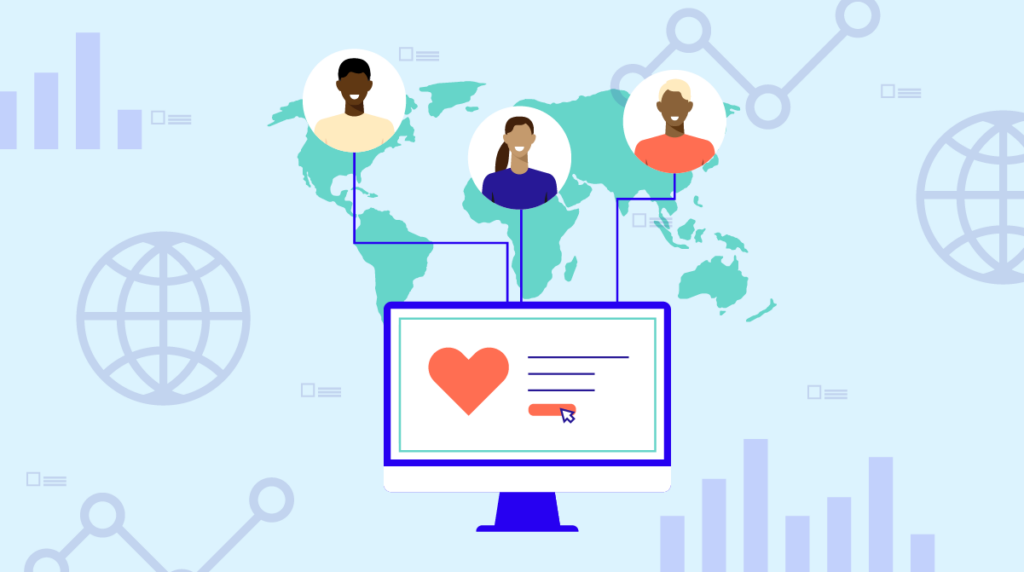
Historically, raising money in-market meant setting up an entity; hiring staff, and having a full infrastructure and physical presence. Is that still the same today in 2024? We would say no, change is afoot. With the digital maturity acceleration we saw in the pandemic, there has been more opportunities – to raise money virtually and across countries which is a trend we’re seeing more and more of.
For Global NGOs there are many benefits to raising money solely via digital:
- programme agility
- market grouping for efficiency
- a testing mechanism to inform higher production/cost channels
Long gone are the days when digital just meant a few core channels – social media (Meta, X, LinkedIn) and Search (Google, Bing, Naver) still fall at the center of any fundraising programme, but organizations are looking far wider to the likes of Digital Out Of Home (DOOH), audio, and a channel that’s received its fair share of buzz in 2023, Connected TV (CTV).
What can we test and learn?
More and more global NGOs are dipping their toe in this test and scale approach with a global digital-first remote fundraising model that offers revolutionary flexibility and coverage.
For emerging markets where an organization may not have historically been present, or only speaking to audiences at a global level, remote digital fundraising acts as a low-cost testing mechanism. This model can bring an element of practicality to the opportunity at hand with the ability to size cross-market audiences and truly understand the cost to reach, engage, and convert new donors. Suddenly, where investing in one new market might not look profitable, combining multiple emerging markets gives a much higher chance of return. Small pilots help fundraising teams understand where to scale, invest, or deprioritise, based on a cost-effective, remote market activation.
The downside to this immediacy and its ability to create data-informed projection models is that a new market requires the launch of both brand awareness and conversion activity that won’t offer the same year one return organisations are often seeking. This is why we urge that initiatives like this one should be paired with a three- or five-year view.
Projections that look further into the future give a far more realistic picture of the opportunity new markets bring. Launching or scaling in a newer market shouldn’t be about instant return, but instead about diversification and future-proofing — especially as we see other markets become more crowded and costly to reach on digital channels.
For organizations seeking a greater return within a shorter timeline, reviewing the cost of individual marketing channels and understanding where best to place your investment with a guaranteed return and understanding which new audience is likely to donate a higher average gift could help you calculate the right investment to hit business KPIs in year one.
Markets can form a cluster or hub
A global model also allows you to group audiences differently. By viewing giving behaviors and barriers through this lens as opposed to at the country level alone, you have more chance of uncovering tapped opportunities or finding new ways for them to give. There is a greater potential to scale and consider like-minded structures. At Blue State, we call this the ‘cluster’ model. Markets may be clustered together if they:
- Have a liked-minded infrastructure: be that a currency or shared data regulations (e.g. GDPR)
- Share a language: For example for Arabic (opportunity to speak to 25 countries) or Spanish (spoken in 21 countries) you could test fundraising outside of the English language whilst at a scale that ensures you are adapting creative that can still serve audiences at scale
- Have similar giving behaviors: such as Taiwan and Singapore, which have synergies in both channel engagement and audience behavior
- Share a rise in a new trend or technology: such as Crypto, allowing tests for niche giving mechanisms to take place at greater scale
For organizations with smaller budgets, this offers d efficiencies as one can move money around more responsively in a cluster model. Regional hubs also allow an organization to upweight spend against markets, audiences or campaigns that are performing well, offering more flexibility across a much wider prospecting pool.
At a time when the UK, US, and other advanced fundraising markets are becoming more crowded and more expensive to reach — while also seeing an increase in data privacy regulations — remote fundraising could allow your organization the opportunity to diversify beyond known markets.
We’ll sign off by mentioning that any remote fundraising approach and model needs to account for all nuances in giving behavior. For example, in Switzerland, donors pledge online and then walk into a bank (!) to cash their cheque, an example of a market with a holistically higher average gift, but a much larger drop off rate and more complicated forecasted calculations.
In today’s world, organizations have the opportunity to be more global and reach more audiences than ever before and, as a result, can be heard by more audiences — and potentially raise more money. We think there’s something exciting about that.